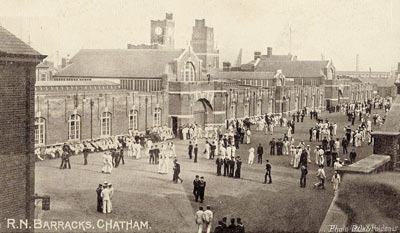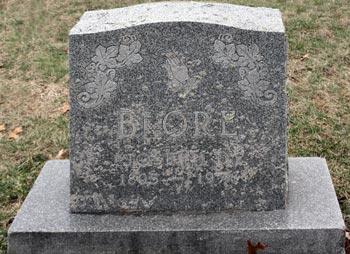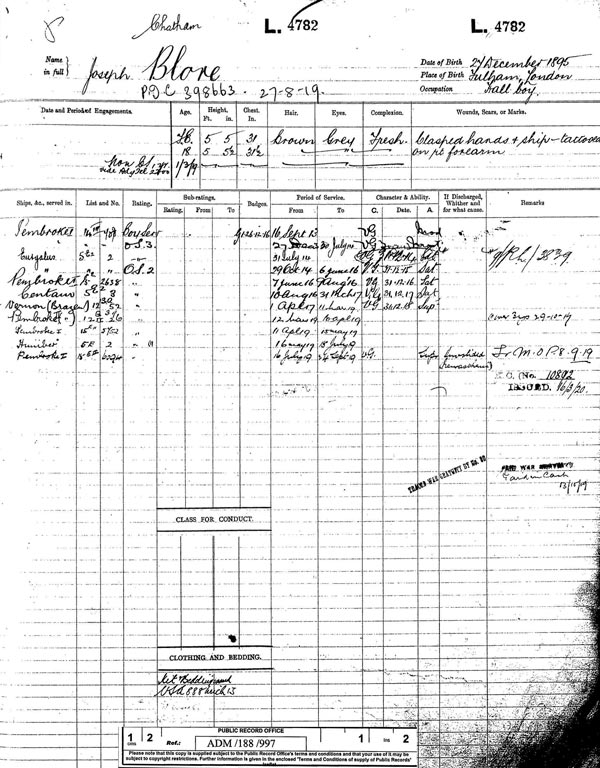David Joseph Blore
Return
Hall Boy
Pembroke I, Chatham WWI
David Joseph Blore
Service Number:
L4782
Regiment & Unit/Ship
Pembroke I
Royal Navy Seaman
Date of Death
October 1978, aged 82.
Buried or commemorated at
Cranston, Providence, Rhode Island, USA.
Country of Service
United Kingdom
Additional Info
Son of Mr. and Mrs. Alfred Blore
Family history
David Joseph Blore was born on 27th December 1895, in Fulham, London.
His father, Alfred Ebenezer Blore, was 33 and his mother, Mary Guise, was 31.
When his parents died, he was only 5, and went to live with a family in Broadwas, Worcester, [The family who adopted
him were, James Phillips, and his daughter Mary Phillips, and they lived at Broad Green, Broadwas] but he was evidently
a handful and went to live with his Aunt Betsy in Broadwas [This was George and Elizabeth Guise; George was his
mother's brother and Elizabeth would have been his aunt Betsy, who already had his brother Arthur Robert Blore living with them]
Their sister Fanny was sent to an orphanage, and their sister, Louisa was in service in London.
George and Harry emigrated to Canada.
Joseph as he was known moved to America, and died there aged 82, in October 1978.
He was buried at Cranston, Providence, Rhode Island, USA. and the Commemoration stone
says "BLORE Joseph 1895 -1978"
HISTORY INFORMATION
In 1903 HMS Pembroke (land based) was opened as an accommodation centre and supply school
until it's closure in 1984. It is now used by the University of Greenwich.
It was an accounting base and will appear on the records of all sailors who's home base was HMS Pembroke.
They may not have been physically at the location of the base during dates shown on records, as they were
often at another port or in transit on a ship to which they were not assigned as crew.
Joseph served on HMS Euryalus from 1914 -1916.
HMS Euryalus was a Cressy-class armoured cruiser built for the Royal Navy around 1900.
Badly damaged by multiple accidents while fitting out, she was not completed until 1904.
She became flagship of the Australia Station that year and was reduced to reserve upon her return in 1905.
Recommissioned in 1906, she became a training ship for the North America and West Indies Station before
being placed in reserve with the Third Fleet in 1909.
Recommissioned at the start of World War I, Euryalus was assigned to the 7th Cruiser Squadron.
She became flagship of the Southern Force defending the eastern end of the English Channel from any German
attack, shortly after the war began. She was present at the Battle of Heligoland Bight a few weeks after the war
began, but saw no combat. She was transferred to convoy escort duties in the Bay of Biscay in late 1914, before
being sent to Egypt in early 1915. Euryalus was then assigned to support British troops during the Gallipoli
Campaign by providing naval gunfire. She covered the landing at Cape Helles in April as well as providing fire
support during one subsequent British offensive. She became the flagship of the East Indies Station in January 1916,
until relieved in July 1917. Later that year she began a conversion into a minelayer at Hong Kong, but this was still
incomplete when the war ended. Euryalus returned home in 1919 and was sold for scrap the following year.
Joseph then served on the Centaur from 1916 - 1917.
Upon being commissioned into the Royal Navy in August 1916, Centaur was assigned to the 5th Light Cruiser Squadron,
which operated as a part of Harwich Force in the North Sea to defend the eastern approaches to the Strait of Dover
and English Channel. On 5 June 1917 she and the light cruisers HMS Canterbury and HMS Conquest sank the German
torpedo boat S20 in the North Sea near the Schouwen Bank off Zeebrugge, Belgium. On 13 June 1918 she struck a
mine and had to undergo repairs at Hull.
Then HMS Vernon. 1917 -1919
On the outbreak of the First World War, Vernon was used to carry out torpedo trials and to train new recruits for
the Navy. Extensive research and development was also carried to develop new anti-submarine devices, mines and
ships' electrics. In September 1917 as part of the Signal School, a DCB Section was established to develop Radio
Control for unmanned vessels from 'mother' aircraft.
And also HMS Humber.
Also HMS Humber in 1919.
HMS Humber was the name ship of the Humber class of monitors, a class of ships originally built for Brazil but taken
over by the Royal Navy at the start of the First World War. She was ready for British service by 25 August 1914,
reaching Dover on 29 August.
King George No. 10892 awarded to Joseph Blore, on 16th March 1920.
©peh




